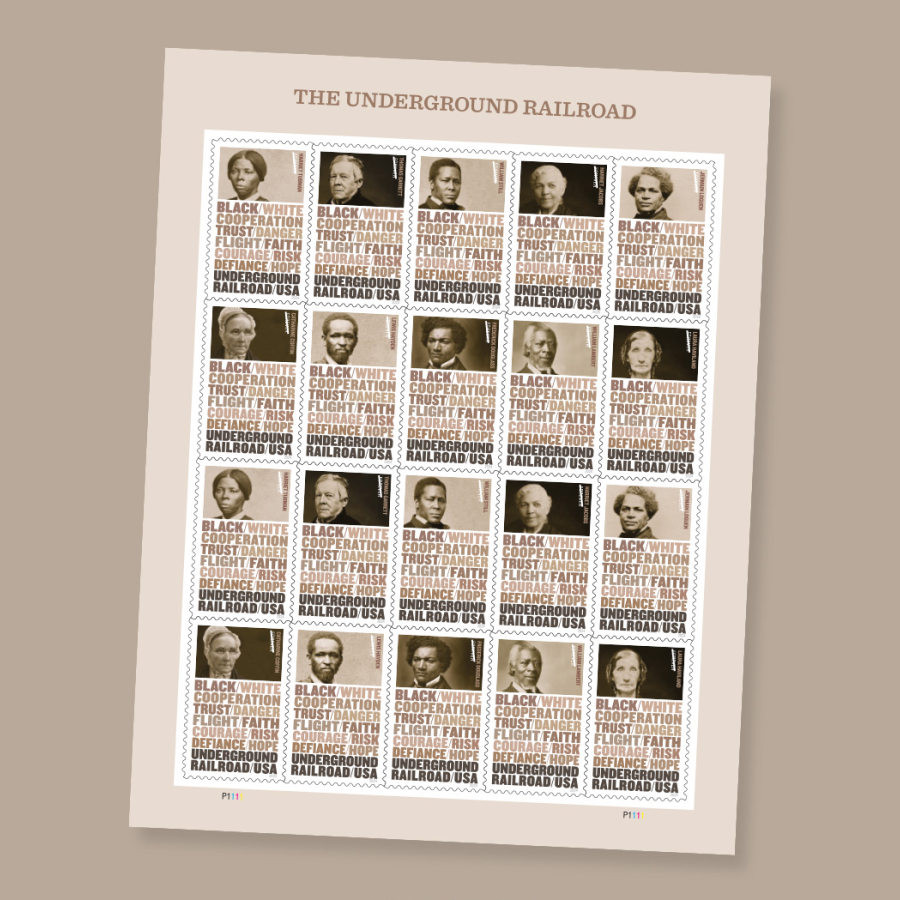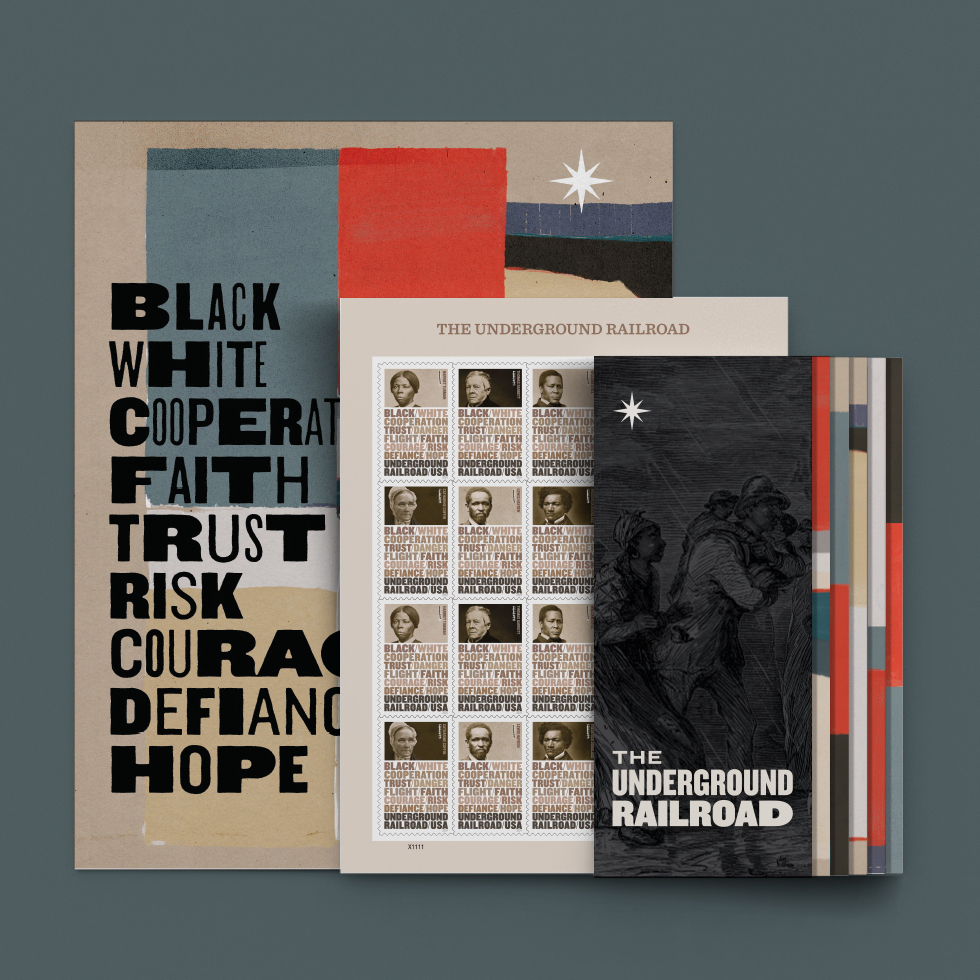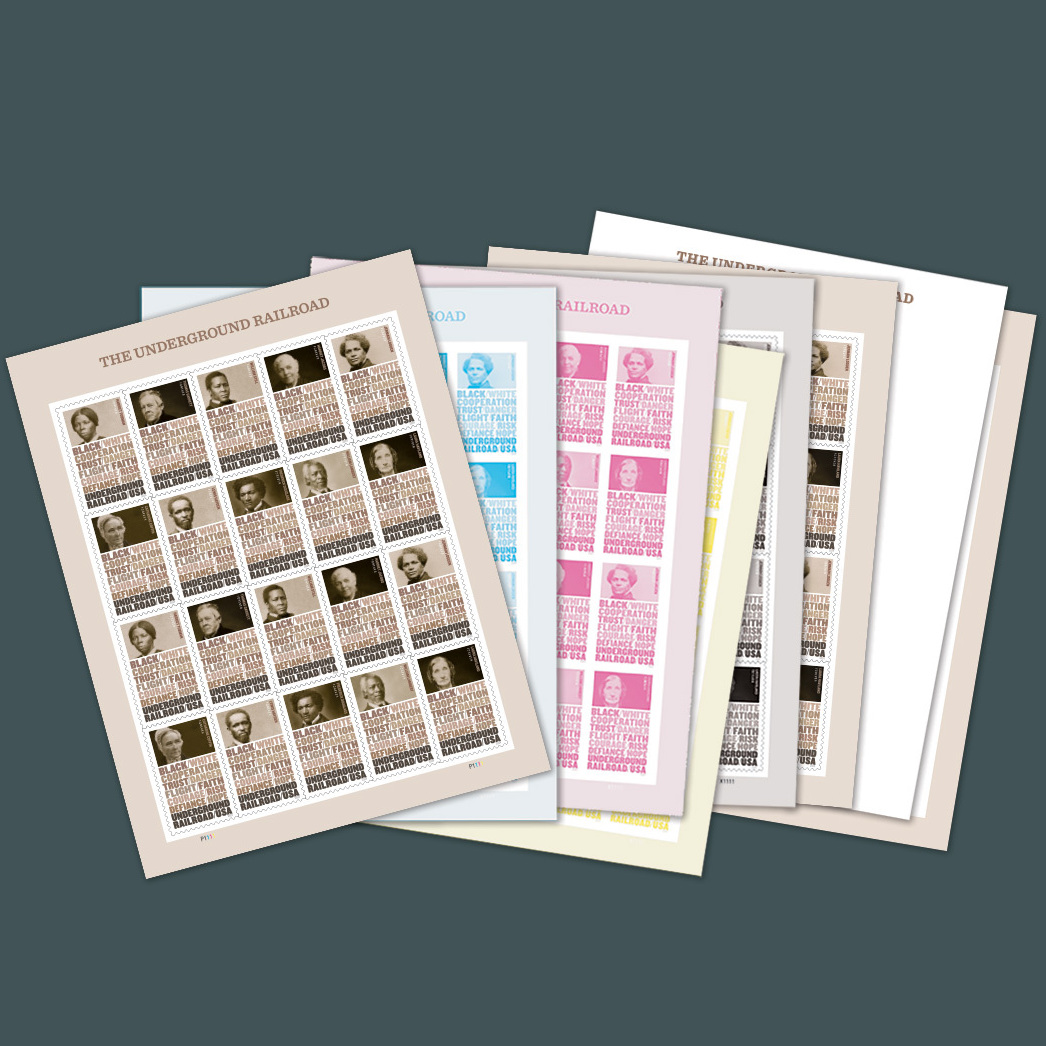
Collaboration That Leads to Freedom
Sharing the story of a pivotal moment in American history
The Underground Railroad issuance honors the courage of men and women who resisted slavery in the United States before emancipation in 1865. The individuals pictured on these stamps — some formerly enslaved, others born free, and some white supporters — took part in an unlikely story of cooperation and trust.
The proposed pane of four unique stamps grew to 10 with input from the National Park Service. A larger pane could tell a broader narrative of the cooperative effort that enabled people to escape enslavement. Art director Antonio Alcalá elaborates on this decision: “Most people know Harriet Tubman and Frederick Douglass, but thousands participated in the Underground Railroad. These stamps allow people to see the faces of some of the other heroes.”
This issuance . . . reminds us of the power of collaboration required to bring about important change.
The underground network relied on bonds of deep trust among strangers. “Fleeing bondage and helping others flee meant trusting people you might not know and, together, defying the law,” says Alcalá.
Alcalá expanded the visual interpretation of the network with the typographic element on the stamps. He selected words that evoked the work of the Underground Railroad and paired certain words together, or above and below one another, to communicate a powerful message. With a variety of colors for the typography, Alcalá represented the diverse group of men and women working toward the same end.

The design for this issuance presented unique challenges to represent this difficult and complex history well. As Alcalá emphasizes, however, this issuance not only celebrates all those who participated in the Underground Railroad but also reminds us of “the power of collaboration” required to bring about important change.
Leaving their mark on history
Offered alongside The Underground Railroad stamp issuance is a unique product that conveys the rich history behind the issuance: “Leaving Their Mark on History: Ten Heroes of the Underground Railroad.” In terms of production technique, there is no other U.S. Postal Service product like it, says designer Lamont Sandridge.
What appears at first glance to be a traditional booklet expands to an impressive 38 inches.
“We wanted readers to have a dual experience with this product,” says Sandridge. They can both dive into brief biographies of the individuals featured on the stamps in a linear fashion and unfurl it to explore key events in the years leading up to emancipation. The spread also includes a map showing the general directions freedom seekers followed.





The booklet design was inspired by the art direction for the stamp — making use of block lettering similar to 19th-century wooden type. The “Behind the Design” section also digs into why Alcalá chose each word to appear on the stamp.
Red alludes to the hues of a sunset, the time of day when most Underground Railroad movement would have commenced, as well as a spirit of resistance.
Along with the booklet, progressive stamp proofs, and mint pane of 20 stamps, the product comes with a custom 8’’ x 10’’ art print. Reproduced on sturdy cardstock, and with a striking design, it’s a piece worthy of wall space. “We wanted to portray how the landscape affected not only these 10 individuals but the thousands of others who were a part of the Underground Railroad,” says Sandridge, who also designed the art print.
He adds that color choice here was intentional — especially the use of the color red. “Red demands a lot of attention, so we wanted to be intentional with our use of it,” he says.
He further explained that red alludes to the hues of a sunset, the time of day when most Underground Railroad movement would have commenced, as well as a spirit of resistance. The piece also includes a muted red, white, and blue theme. “We wanted it to be subdued or even somber,” says Sandridge, to reflect the tone of this chapter of our nation’s history.
Brightened by the North Star in the upper right-hand corner, the abstract landscape invites viewers to add their own interpretation while considering the treacherous flight to freedom so many undertook. “We thought that the North Star was essential,” says Sandridge. “We included it as a symbol of hope.”